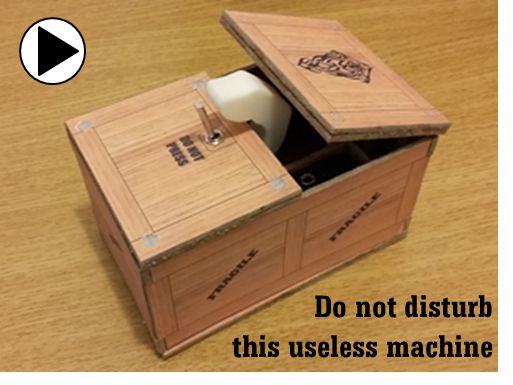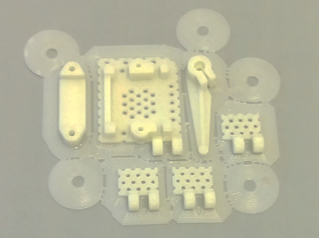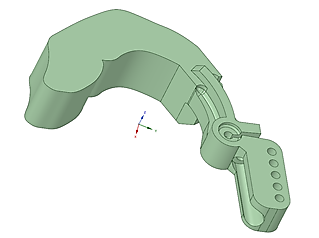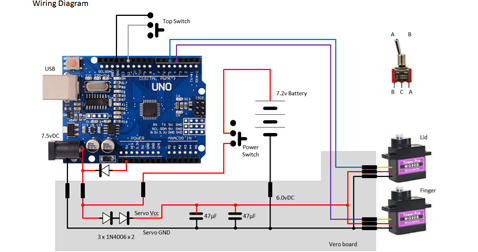
- Project
Useless Machine
I came across examples of ‘Useless Machines’ on the internet and decided it would be fun to make one for my 1 year old grandson. You too can make this relatively cheap to make toy. Watch the video to see how it works.
The corner fasteners and mount for the power ON/OFF switch were simply glued into position. The fasteners have ribbed sides to increase their surface area for glueing purposes. All of the 3-D models are provided as STL files, zipped together into one file. They can therefore be used directly with a slicing application of your choice, to create the g-code files for use with a 3-D printer. For my project I used Slic3r to generate the g-code, and it is a free download from the internet.
I also use a free application called Pronterface as a means of loading and viewing the g-code file before sending it to the printer. This gives you information on the amount of material used and most importantly how long it will take to print.
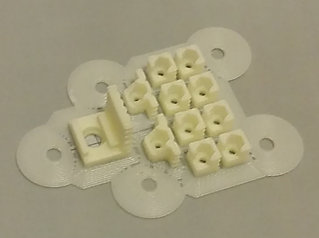
Design Files
The following files can be downloaded to help you complete this project. Each has a hyper-link and an associated description. Depending on how your web browser is configured the links will either open the files directly into the browser or offer them as downloads.
Circuit Diagram - a drawing of what is seen in the view above, plus veroboard wiring. Use it as a guide to wiring up your project.
Parts list - the things you will need and budget prices.
Physical Templates - .drawings produced in Ms PowerPoint. Ensure that they do print at the correct size, if used directly on hardboard.
3-D Models - a zip file containing all of the STL files, which you can use with a slicer application.
Servo Calibration - a pdf file depicting how I calibrated the switch and lid servos.
Software Code - the all important Arduino .ino file which runs the project and ‘Processing’ application. See comments below on coding.
Libraries
This project relies on the use of one library, Servo.h, which are included in the IDE set-up. See notes below regarding the need to calibrate your servo motors.
Design Notes:
The following notes will help you understand how the files in this project work or can be used in principle. Each note has a bold heading for quick reference and they are listed in alphabetical order.
.ino File - when you download this file remember to place it in a folder with the same name, otherwise the Arduino IDE will not load it and display an error message.
3-D Models - this design is based on the use of 3mm nylon countersink screws with niloc nuts as fasteners. This leads to a very clean solution as the length of each screw can be easily trimmed adjacent to the nut using wire cutters.
Calibration - When attaching the finger to the servo motor mounted on the fixed lid and the servo which raises the lid arm you will need to determine the angles at which the respect parts touch the toggle switch and lid.
Page updated: 18/02/2024
